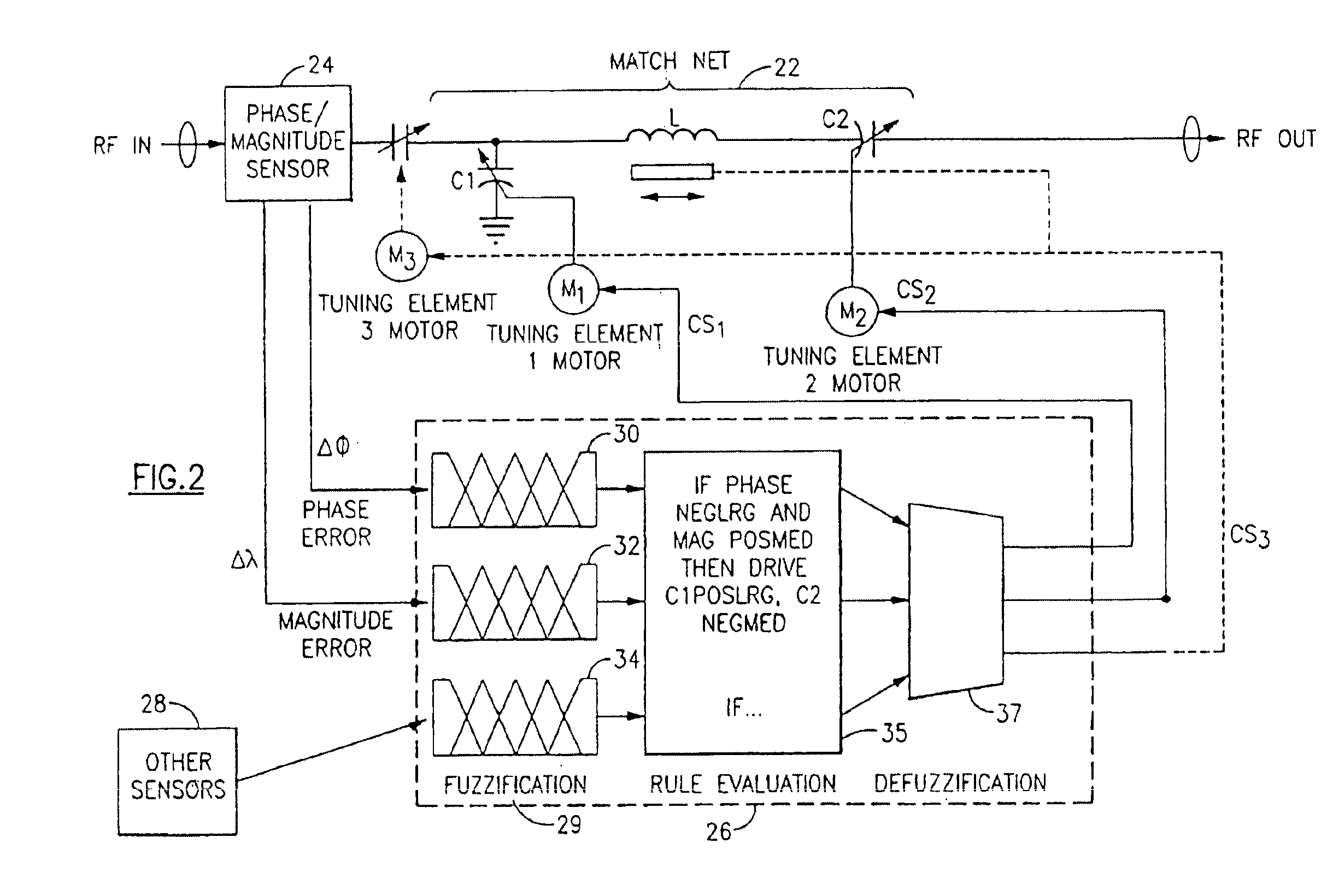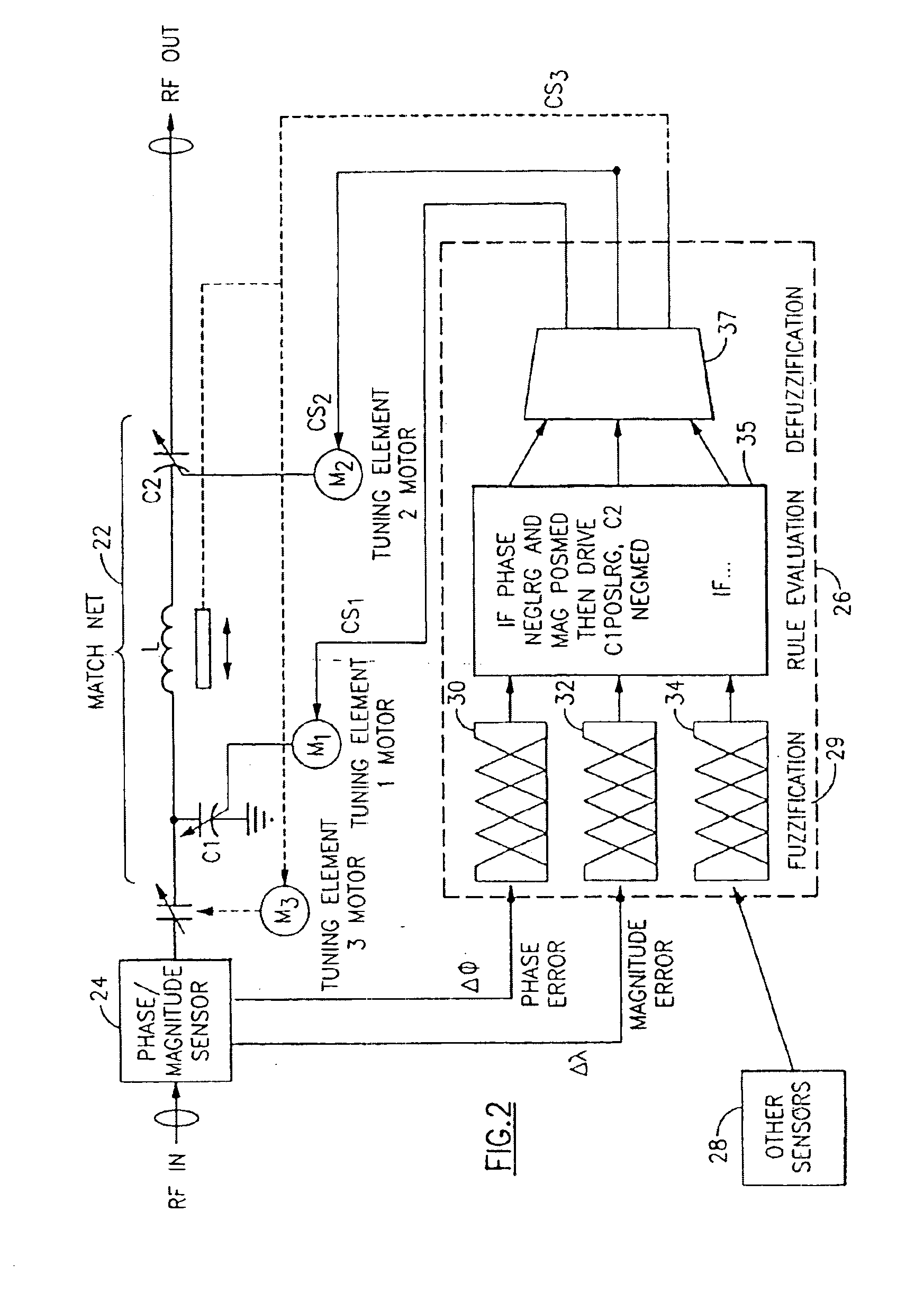Fuzzy logic tuning of RF matching network
a fuzzy logic and matching network technology, applied in adaptive control, process and machine control, instruments, etc., can solve the problems of conventional system difficulty in quickly achieving matched impedance, loss of condition problems, and inability to solve current design, so as to achieve enhanced performance, avoid loss condition problems, and improve overall loop gain
- Summary
- Abstract
- Description
- Claims
- Application Information
AI Technical Summary
Benefits of technology
Problems solved by technology
Method used
Image
Examples
Embodiment Construction
[0027]With reference to the Drawing figures, and initially to FIG. 1, an RF plasma processing system 10 is shown for purposes of example. A plasma generator 12 provides RF electrical power at a predetermined frequency, i.e., 13.56 MHz. The output of the generator 12 is followed by a harmonic / subharmonic filter 14, which is then followed by an impedance matching network 16, which supplies the electrical power through a voltage / current sensor system 18 to an input of a plasma chamber 20. The matching network 16 comprises a controllable impedance matching unit 22, with a phase / magnitude sensor 24 connected at its input. The sensor provides a phase error signal Δφ that is proportional to the difference between the nominal input impedance phase angle and the actual phase angle (φ-φo) of the impedance matching unit, and also provides a magnitude error signal ΔZ that is proportional to the difference between the nominal input impedance and actual input impedance (Z-Zo).
[0028]A fuzzy logic ...
PUM
 Login to View More
Login to View More Abstract
Description
Claims
Application Information
 Login to View More
Login to View More - R&D
- Intellectual Property
- Life Sciences
- Materials
- Tech Scout
- Unparalleled Data Quality
- Higher Quality Content
- 60% Fewer Hallucinations
Browse by: Latest US Patents, China's latest patents, Technical Efficacy Thesaurus, Application Domain, Technology Topic, Popular Technical Reports.
© 2025 PatSnap. All rights reserved.Legal|Privacy policy|Modern Slavery Act Transparency Statement|Sitemap|About US| Contact US: help@patsnap.com



